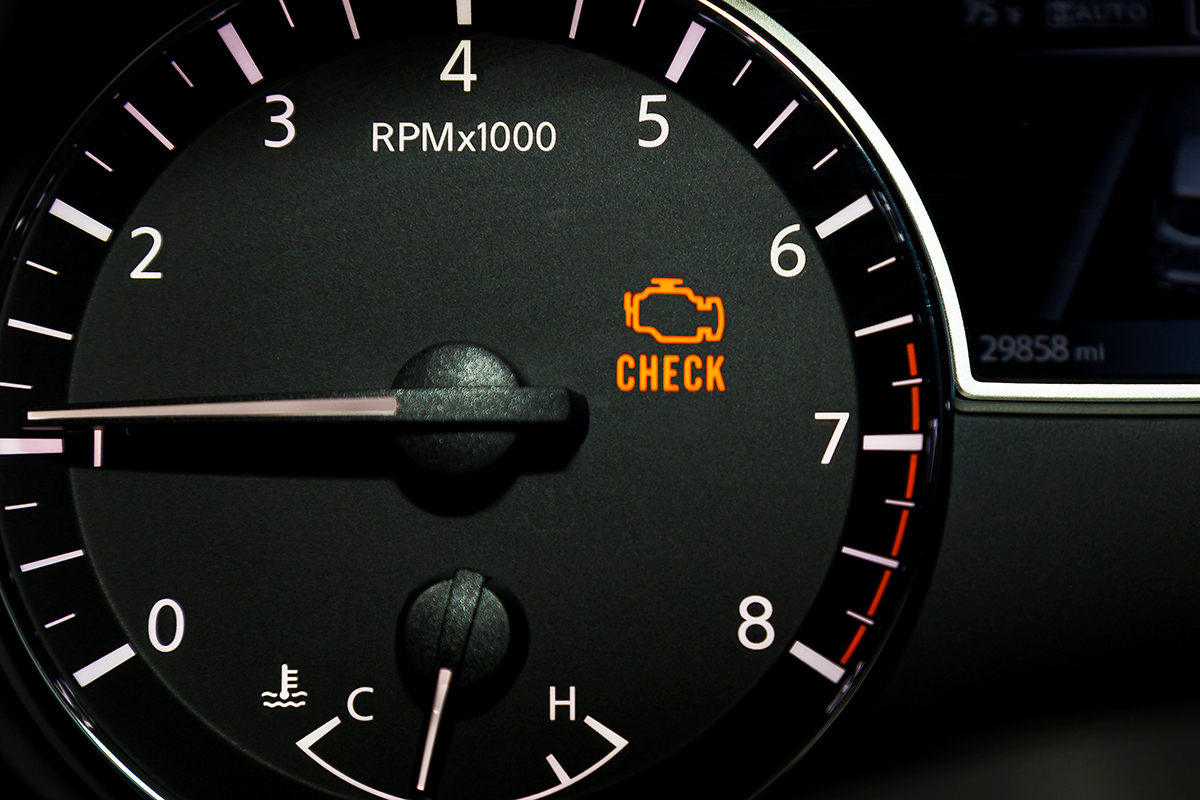First, know what your check engine light looks like
Be sure that you know what your check engine light looks like and where it is located. The check engine light is located on your dashboard where the instrument lights are. Different cars use different identifiers, so be sure to check out your vehicle manual so that you know exactly what your check engine light looks like. Chances are it will look something this:
Four Wheel Alignment
- We road test vehicle, looking for tire wear, steering pull, vibration through steering and/or the whole car, or specific items that the customer is experiencing.
- Check front and rear end for wear, check steering and suspension for any problems that could affect the aligning of the vehicle.
- Before moving vehicle to alignment bay, we check that all the adjusters are free.
- Set up on alignment machine and print results.
- Adjust alignment and print results.
- If there are specifications that can’t be adjusted, we report to control after printing the first results.
- Recommend further checks, steering axis inclination (SAI) and included angle. If these are ok, we recommend shim or adjustment kit.
Labor times can vary from vehicle to vehicle. In some cases, it can take several hours to align a vehicle.
Is the check engine light flashing?
If your check engine light is flashing, you will need to stop driving as soon as possible. If you don’t stop driving, you risk incurring catalyst damage which could be very expensive to repair. Call a tow truck to have your car towed to your auto repair shop.
If your check engine light comes on and stays on
Your check engine light will come on whenever the On-Board Diagnostics – Generation II (OBD II) computer in your vehicle detects a problem. This OBD II computer package has been installed in cars since 1994 and is designed to be an early warning system. It will come on whenever either the engine tailpipe or evaporative (fuel system) emissions exceed industry standards. It can be activated by something serious or something as simple as you not replacing the gas cap tightly enough. Make sure you completely secure the cap any time you stop for gas. So… if your check engine light comes on and you are not experiencing any drivability problems, you can most likely continue driving without causing any damage (except to the environment of course). You should schedule a visit to your auto repair shop as soon as possible.
If you make an appointment with us, here is what we do
When you bring your car in because the check engine light has come on, the first thing we do is hook your car up to a computer so that we can scan for codes. Codes identify the system at fault that put the light on. They provide a general idea of the problem area. We do this first scan test as a courtesy so we can give you an idea of what the next diagnostic step will be. The technician then looks at the information behind the code, looks at a snapshot of the data when the check engine light came on, and takes an in-depth look at the live sensor data. This includes things like vehicle speed, the position of the gas pedal, the temperature of the engine, and so forth.
The technician’s next step is to interpret the data that’s been collected and check for service updates and recalls. All this information is used to develop a diagnosis report that the service writer uses to estimate the cost of the repair. Once the vehicle is repaired, we reset the computer. This means that the computer has to re-establish a baseline of performance data for your car. That’s why you need to postpone doing an emissions test following a computer reset for at least two weeks.
It can be scary when your check engine light comes on. But with the information in this blog, you know the steps you need to take to get it checked out. You can always at 410-381-2700 or schedule an appointment online by click here to schedule an appointment online.





